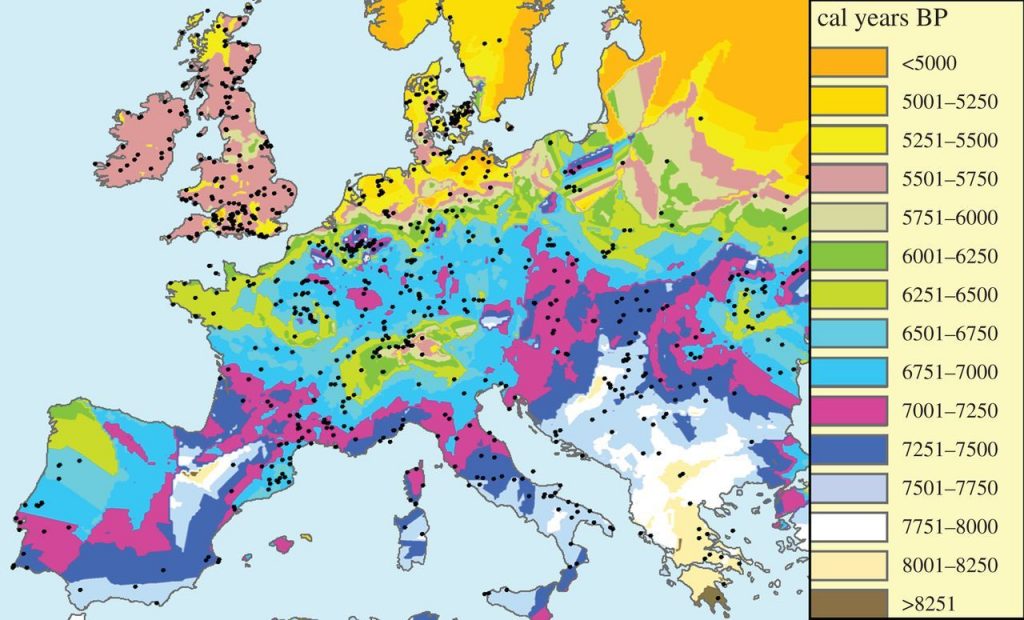A new study has traced the evolution of the hepatitis B virus (HBV) from prehistory to the present, revealing dissemination routes and changes in viral diversity.
In a new paper in the journal Science, researchers uncover the evolution of HBV since the Early Holocene (roughly 12,000 years ago, when the human species began to dominate the globe) by analysing the largest dataset of ancient viral genomes produced to date.
In the 21st Century, HBV causes close to one million deaths each year. Recent ancient DNA studies have shown that the virus has been infecting humans for millennia, but its past diversity and dispersal routes remained largely unknown. The new study conducted by a large team of researchers from all around the world provides major insights into the evolutionary history of HBV by examining the virus’ genomes from the remains of 137 ancient Eurasians and Native Americans who lived at various times between 10,500 and 400 years ago

The study’s results highlight dissemination routes and shifts in viral diversity that mirror well-known human migrations and demographic events, but also show unexpected patterns and connections to the present.
Present-day HBV strains are classified into nine genotypes, two of which are found predominantly in populations of Native American ancestry.
Coming to the Americas
The study provides strong evidence that these strains descend from an HBV lineage that diverged around 11,700 years ago, and was carried by some of the first inhabitants of the Americas.

“Our data suggest that all known HBV genotypes descend from a strain that was infecting the ancestors of the First Americans and their closest Eurasian relatives around the time these populations diverged,” says Denise Kühnert, supervisor of the study. Kühnert is head of the Transmission, Infection, Diversification and Evolution (TIDE) Group at the Max Planck Institute for the Science of Human History in Germany.
HBV in prehistoric Europe
The study also shows that the virus was present in large parts of Europe as early as 10,000 years ago, even before the spread of agriculture to the continent.
![Geographic distribution of ancient HBV genomes within different time-periods, coloured by lineage. (BP = Before Present). (Illustration courtesy of Science [www.science.org/stoken/author-tokens/ST-161/full])](https://hepatitissa.asn.au/blog/wp-content/uploads/2022/03/ezgif.com-gif-maker-686x1024.jpg)
“Many human pathogens are thought to have emerged after the introduction of agriculture, but HBV was clearly already affecting prehistoric hunter-gatherer populations,” says Johannes Krause, director of the Department of Archaeogenetics at the Max Planck Institute for Evolutionary Anthropology and co-supervisor of the study.
After the movement of people from the Near East to Europe, the HBV strains carried by hunter-gatherers were replaced by new strains that were likely spread by the continent’s first farmers, mirroring the large genetic influx associated with the expansion of farming groups across the region. These new viral lineages continued to prevail throughout western Eurasia for close to 4,000 years. The dominance of these strains lasted through the expansion of western herding populations around 5,000 years ago, which dramatically altered the genetic profile of Europeans—but, strangely, was not associated with the spread of new HBV variants.
Collapse and Reappearance
One of the most surprising findings of the study is a sudden decline of HBV diversity in western Eurasia during the second half of the 2nd millennium BC, a time of major cultural shifts, including the collapse of large Bronze Age state societies in the eastern Mediterranean region.
“This could point to important changes in epidemiological dynamics over a very large region during this period, but we will need more research to understand what happened,” says Arthur Kocher, lead author and researcher in the TIDE Group.
All ancient HBV strains recovered in western Eurasia after this period belonged to new viral lineages that still prevail in the region today. However, it appears that one variant related to the previous pre-historic diversity of the region has persisted to the present. This prehistoric variant has evolved into a rare genotype that seems to have emerged recently during the HIV pandemic, for reasons that remain to be understood. There is still a lot to learn about the long history of humans and hepatitis B.
Originally published in Hepatitis SA Community News Issue 93. Browse all issues at https://hepatitissa.asn.au/magazine
